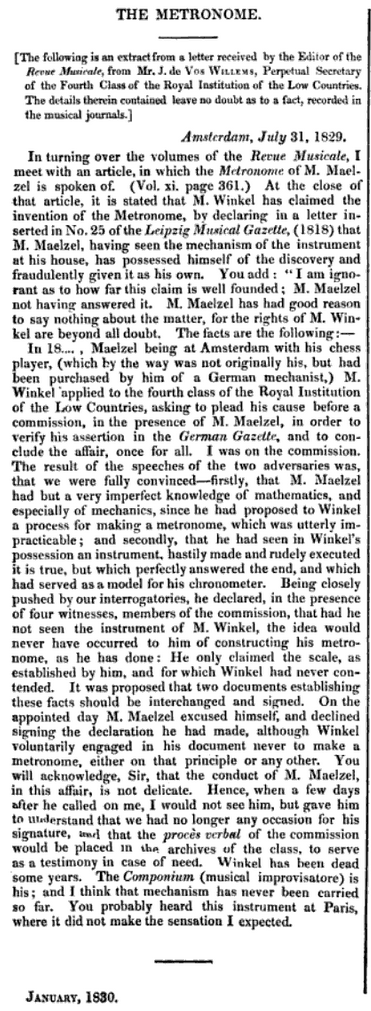|
Ricardo -> Beethoven metronome broken? (Dec. 2 2022 14:09:06)
|
So I had no idea that there is this crazy argument about metronome markings in the 19th century. This relates to flamenco I guess, and in particular could have relevance if proven true for the Ocon score Soledad that is marked at 184 bpm (close to buleria).
In case people are confused at what his guy is saying (I was), he believes, based on the fact modern pianists struggle with certain pieces outside of their tempo ability, that back in the 1800s the tempo indications such as quarter note equals 120bpm, that what that refers to was TWO swings of a pendulum metronome each = 120, so that actual feeling of the quarter note is half that, or 60 bpm. In other words, most or ALL the classical music from the birth of the metronome to audio recording technology, was performed at HALF the speed we think of it today. He argues that most of those pieces are played too fast, but IN THE MIDDLE of the indicated speed and its subdivisions, due to the “impossible technique” required to execute the real speed. (Something like quarter=120bpm I described, people play in the 90s, however, he believes they are playing too fast, it should be 60bpm). I am not so sure I buy the argument, but find it interesting people are so concerned about it:
https://youtu.be/vBFmJVG0wak
This guy has tons of videos and examples on the subject, but none of the others really convince me, and here we have written evidence he presents, that might have interpretation issues (16ths and 32nds are in the score with ta’s under).
|
|
|
|

